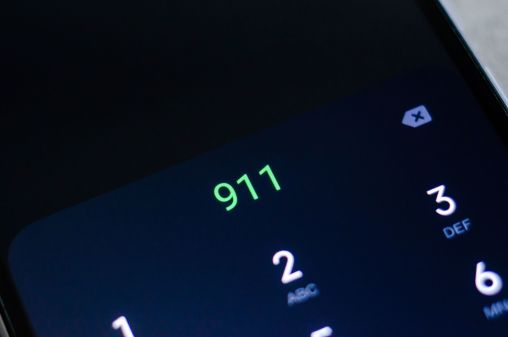Officials worry next-generation 911 could expose operators to gory images

State and local governments are gradually building out capabilities for next-generation 911, but emergency managers say they have concerns about the emerging technology.
At issue is how the IP-based networks will be secured and funded. But some managers, like Deidra Moore, a 911 director in Banks County, Georgia, also expressed worries about whether the introduction of photos and video into emergency calls could expose dispatchers to graphic imagery they may not be accustomed to viewing.
Banks County upgraded its legacy emergency call handling system, which Moore described as “well past end-of-life,” in January to a system that prepares the jurisdiction to take advantage of all the next-generation 911 features, including IP-based call routing and photo and video when the rest of the northeastern Georgia’s infrastructure is ready.
Banks County’s call systems are ready for next-generation 911, but Moore, who’s been working in emergency management since 1989, said she’s not sure she is.
“The telecommunications professional has an extensive amount of training to handle things verbally,” Moore said. “But what we don’t have yet, at least in the state of Georgia, is the level of training to deal with what they’re seeing visually.”
Moore said she knows plenty of others who work in call centers because they also knew they weren’t cut out for the realities of front-line first response.
“It’s stressful enough hearing it,” she said. “It adds a whole ‘nother element seeing it. I didn’t get into it to see that. I don’t want to see the blood and gore.”
Brian Fontes, chief executive of the National Emergency Number Association, said concerns about 911 operators seeing graphic content are common, but overblown.
“Even though next-generation 911 enables it, it is not clear at all that the 911 pros will have to look at horrible, gruesome photographs,” Fontes said.
Call-takers will be able to see that photos or videos are attached to a service request, he said, and then they will route that data directly to first responders and to state or regional analytics teams for analysis, just as some urban emergency centers today forward on imagery and data associated with automatic license plate readers to specialized analysis centers.
“It’s going to be dependent on how cities and states want to structure their analysis teams,” Fontes said.
Monica Million, executive co-director of the Colorado 911 Resource Center, said that some urban centers may have resources like that available, but worried that more rural call centers might not.
“Frankly, it’s a huge concern,” Million said. “That doesn’t mean we didn’t create our own horrible pictures in our mind, but because the community can with their devices send pictures and videos and whatever else, there is a lot of concern that’s exactly what’s going to happen. We’re going to be exposed to things we’ve never been exposed to before.”
New dollars needed
Before concerns of blood and gore in call centers can be either validated or dismissed, the country must first build the infrastructure for next-generation 911. According to a December report published by the Federal Communications Commission in December, there’s still a long way to go.
An analysis of the FCC survey conducted by the Oregon Office of Emergency Management found that Indiana, Iowa, Maine, South Dakota, and Vermont are furthest along in deploying the core services behind next-generation 911. Massachusetts, Washington and Arizona are building core services, too, while most other states are still working on putting the internet-protocol-based networks in place needed to support the new services. Just 16 states have IP-based emergency networks.
“The area where we’re having issues is not in the 911 space, but the carriers providing that connectivity,” Fontes said.
Building networks is costly, and the phone service fees most states collect to fund maintenance of today’s 911 systems and operations will not be nearly enough to fund the additional technology deployments needed. According to a federal report published in October, a nationwide next-generation 911 deployment is expected to cost between $9.5 billion and $12.7 billion.
As an additional funding challenge, some states — Montana, Nevada, New Jersey, New York, Rhode Island and West Virginia, plus the U.S. Virgin Islands — have diverted some portion of their 911 funding pools to other unrelated purposes. Legal technicalities in Alaska, Hawaii, Missouri, Puerto Rico and the Virgin Islands prohibit the use of 911 funds for next-generation 911 projects.
“Funding is probably the greatest barrier we have today getting to the core service for next-generation 911,” said Frank Kuchta, Oregon’s statewide 911 program manager.
Phone subscribers in Oregon each pay a 75 cent surcharge on their bills, but that only funds 30 percent of statewide investment, Kuchta said. Oregon is one of the states that has an IP-based network ready to support 911, but he said the funding for the call-routing components, the most costly piece of the deployment, isn’t there.
“Modernization requires all new dollars to invest,” Kuchta said.
Colorado is aiming to connect its first call center to a statewide IP-based network this summer, Million said, but how the entire project will be funded remains unclear because the funding model is population-based and the rural areas that need the funding for upgrades don’t have a lot of people.
“Costs are five and six times what they were for the old network and the communities just don’t have the funding to pay for that change,” she said. “We’re trying to fund a new phone system on a 30-year-old funding model and it just doesn’t add up.”
Million estimated Colorado’s new system will cost $15 million annually, compared to the $3.5 million today’s system costs to maintain.
Managing the cybersecurity associated with IP-based networks will generate additional expense and risk that hasn’t been entirely accounted for. Thirty states reported to the FCC that they did not spend any funds on cybersecurity programs for their call centers in 2017.
“The technologists in our world have had to get educated rather quickly as we roll out these next-generation 911 networks,” Million said. “You were talking about copper wire in the ground. Now you’re talking about internet data in a pipeline over a network. That’s all extremely hackable.”





